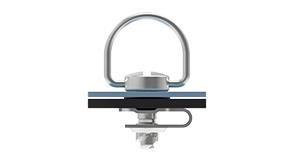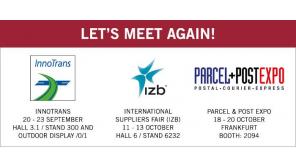Advances in Touch Point Technology Help Improve Aircraft Interiors

The impact of the COVID-19 pandemic on the airline industry has been dramatic and highly disruptive. The onset of the pandemic forced massive travel shutdowns, and subsequent variants like Delta and Omicron have prevented air travel’s return to pre-pandemic levels. As a result, airlines have been working to control costs and improve passenger experience so that airlines can expect growth once conditions improve or return to normal.
Airlines are investing in several initiatives to control costs. In response to increasing fuel costs and other inflationary trends in supply chains and logistics, they are concentrating on redesigning their fleets for reduced overall weight to optimize fuel consumption and the passenger experience. Rather than ordering new aircraft, they are refreshing interiors so that seating, overhead storage compartments and other elements utilize newer, more lightweight equipment. In addition, they are responding to several trends in passenger preferences.
As aircraft OEMs modify and improve cabin interior fixtures, there are hinging and latching technologies that can help address certain challenges and maximize the functionality of passenger seating design. Focusing on these small “touch points” can create a large impact by improving usability and heightening the perception of airline quality.
Position control technology enhances lighter-weight seating
Updating seating is one area where airlines are “lightweighting” aircraft interiors. This can present a challenge for seating designers: By using lighter metals and plastics, or slimming down the construction of the seat, there is a risk that passenger perception of comfort and quality can negatively impact a particular carrier’s brand appeal and value.
There are also changes being made to seating materials in response to safety concerns related to COVID-19. Some airlines are having seating suppliers replacing cloth coverings on such as armrests with nonporous, lightweight plastics. These facings are easier to clean and disinfect but could lead to negative impressions of “cheap” plastic rather than cloth.
Aircraft seating designers can preserve a quality experience by combining changes in seating features with smart component selections. One option where seating weight is being reduced is through the shift away from installing screens into the back of passenger seats. Instead, they’re replacing these heavy devices with interfaces for passengers’ own digital devices — smartphones, tablets and laptops.
Seating designers are using lighter-weight plastics for tray tables. They are also designing two-part tray tables that can fold out in two steps, offering a smaller surface to hold digital devices and drinks, and a second, fuller surface for holding meals or laptops.
To make a plastic table or tray feel like a more substantial, high-quality fixture, seating designers can use position control hinges that incorporate engineered friction technology to provide continuous resistance through the range of motion, so a lightweight plastic tray table feels heavier and stronger.
To further improve passengers’ touch point experience of tray tables, some designers are replacing commonly used barn door-style latches holding the tray table closed with paddle-style, similar to those used in automotive glove boxes. These kinds of latches provide a cleaner, more modern look, have a better actuation feel when opening or closing and provide an additional layer of quality.
Improving storage compartment latching
The drive to make planes more lightweight has led overhead compartment manufacturers to develop thinner-walled compartments. They use lightweight materials that allow for additional storage space to lighten the aircraft’s load without compromising structural strength.
However, lighter materials tend to flex more during general use and normal vibration that occurs during flight. Compartment doors must remain securely closed when an aircraft encounters significant turbulence or impact on landing. To meet this goal, compartment manufacturers are using double rotor-style rotary latches to provide a solution that fully envelopes the striker bolt when closed. This design provides redundant latching so that in the event one of the rotaries fails to correctly latch, the panel remains secure until repairs can be made.
Improved latching technology is not just important in passenger areas. Aircraft galleys contain densely packed storage areas that must be well designed to support an aircraft’s needs, especially on long-haul flights.
All storage compartments must be tightly latched and secured during takeoffs, landings and turbulent flight conditions. One solution is the use of electronically actuated push-to-close latches that offer a simple, versatile solution that can be applied across the cabin to achieve remote access and security. The latch mechanism is concealed when installed within any door or panel in the cabin, allowing a clean exterior surface that does not disrupt aesthetic design.
Electronic latching also offers the opportunity to communicate to a single source to provide a clear and easy-to-see indicator ensuring that all compartments are properly latched. If all the compartments in the galley and aircraft cabin use electronic locks, then the flight attendant responsible for confirming that all doors are secured can look at a single status board that is wired or wirelessly connected to all the latches, confirming with a single step that the aircraft is safe for takeoff or landing.
Increased use of standardized mechanisms
When investing in upgrading or refreshing aircraft interiors, there are approaches to industrial design and component acquisition that can help keep costs under control. Choosing standardized latching and hinging mechanisms can save both time and engineering costs from the start. Rather than custom-designing and machining these components for each new fixture or application, product development teams that select proven mechanisms already in use in similar applications have a greater level of confidence at the beginning of the design process. This allows the focus to be redirected to more critical areas.
This results in a more cost-effective new product development process because it reduces the number of design iterations, thus decreasing the possibility for excess design, analysis and product validation costs.
Aerospace OEMs are also seeing value in investing in higher production tooling for lower overall program costs. For instance, with plastic-molded and cast components, the cost to manufacture is significantly lower after the initial tooling investment is made, compared to CNC machining components for each individual application. Not only are injection-molded and cast products manufactured in a much faster process, but with proper mold flow analysis and tool coring, significantly lighter and stronger products can be achieved.
There are also operational advantages to using standardized, proven mechanisms. Throughout many aircraft, there are standardized quarter-turn fasteners used to attach fixed elements, like gauges and screens in the cockpit, as well as under seat cable routings for inflight entertainment systems.
These proven fastening devices are well designed, highly vibration-resistant and easy to open and close when maintenance activities are called for. They help reduce aircraft-on-ground time, keep planes flying and ultimately generate revenue for the airline. Rather than designing specialized fasteners for each unique application, utilizing standardized fasteners makes it easier and faster for service personnel to make changes or repairs.
Conclusion
By integrating well-engineered, lightweight access hardware and positioning technology into seating, overhead cabinets, cockpits and galleys, OEMs and interior equipment suppliers can improve usability, safety and reliability. There are also significant engineering time and cost savings to be gained by considering wider use of standardized mechanisms.
Working with leading suppliers of position control and access hardware can help aircraft interior engineering staff make intelligent, cost-effective decisions about the right devices to select when considering aircraft interior refreshes. They can provide a range of options based on specific applications, functionality and the touch point experience that are key in any refresh project.



